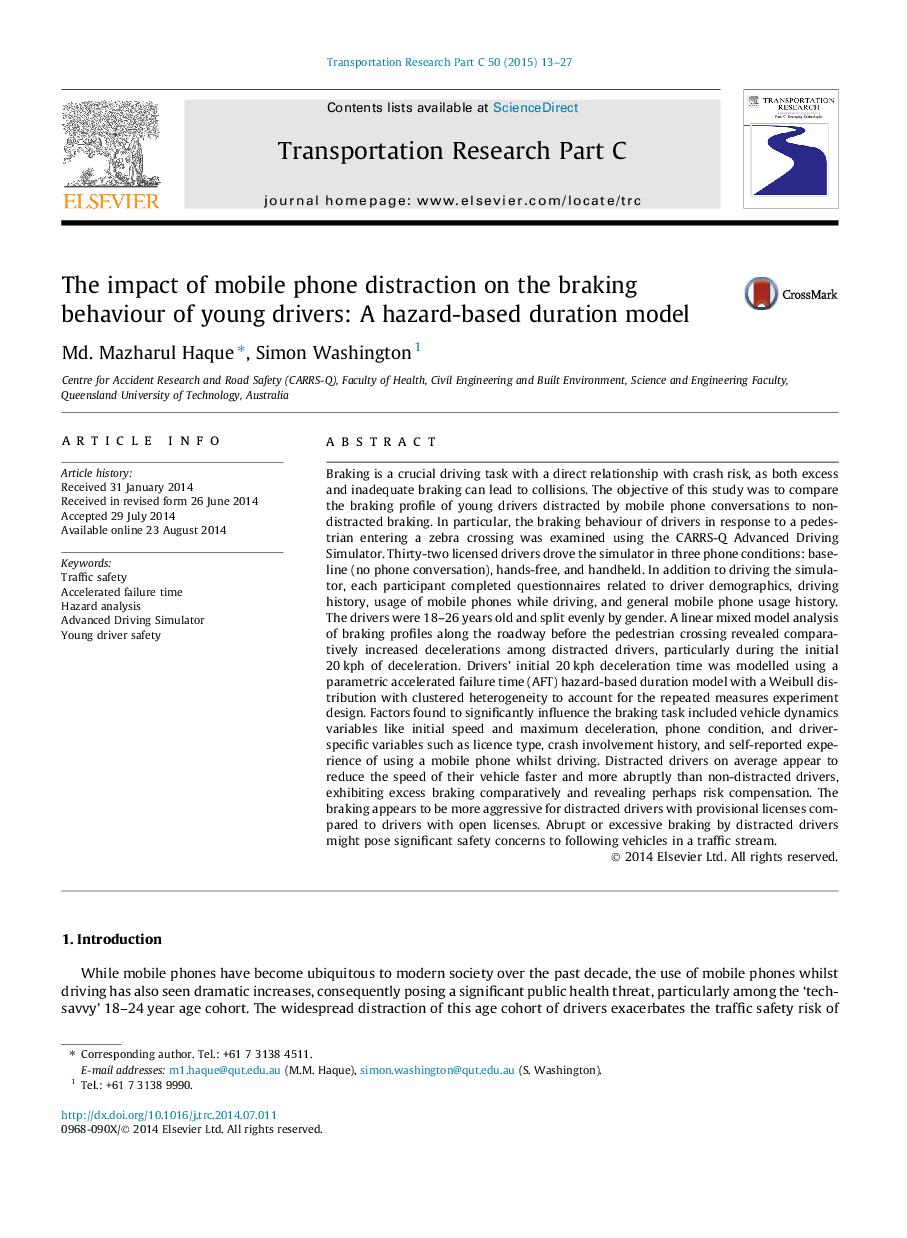| کد مقاله | کد نشریه | سال انتشار | مقاله انگلیسی | نسخه تمام متن |
|---|---|---|---|---|
| 525026 | 868882 | 2015 | 15 صفحه PDF | دانلود رایگان |
• Mobile phone distraction impairs the braking behaviour of drivers.
• Distracted drivers tend to reduce the speed of their vehicle faster and more abruptly.
• The braking is more aggressive for distracted provisional licence holders.
• Hands-free and handheld phone conversations have similar influence on the braking.
• The Weibull AFT model with clustered heterogeneity is suitable to model braking behaviour.
Braking is a crucial driving task with a direct relationship with crash risk, as both excess and inadequate braking can lead to collisions. The objective of this study was to compare the braking profile of young drivers distracted by mobile phone conversations to non-distracted braking. In particular, the braking behaviour of drivers in response to a pedestrian entering a zebra crossing was examined using the CARRS-Q Advanced Driving Simulator. Thirty-two licensed drivers drove the simulator in three phone conditions: baseline (no phone conversation), hands-free, and handheld. In addition to driving the simulator, each participant completed questionnaires related to driver demographics, driving history, usage of mobile phones while driving, and general mobile phone usage history. The drivers were 18–26 years old and split evenly by gender. A linear mixed model analysis of braking profiles along the roadway before the pedestrian crossing revealed comparatively increased decelerations among distracted drivers, particularly during the initial 20 kph of deceleration. Drivers’ initial 20 kph deceleration time was modelled using a parametric accelerated failure time (AFT) hazard-based duration model with a Weibull distribution with clustered heterogeneity to account for the repeated measures experiment design. Factors found to significantly influence the braking task included vehicle dynamics variables like initial speed and maximum deceleration, phone condition, and driver-specific variables such as licence type, crash involvement history, and self-reported experience of using a mobile phone whilst driving. Distracted drivers on average appear to reduce the speed of their vehicle faster and more abruptly than non-distracted drivers, exhibiting excess braking comparatively and revealing perhaps risk compensation. The braking appears to be more aggressive for distracted drivers with provisional licenses compared to drivers with open licenses. Abrupt or excessive braking by distracted drivers might pose significant safety concerns to following vehicles in a traffic stream.
Journal: Transportation Research Part C: Emerging Technologies - Volume 50, January 2015, Pages 13–27
